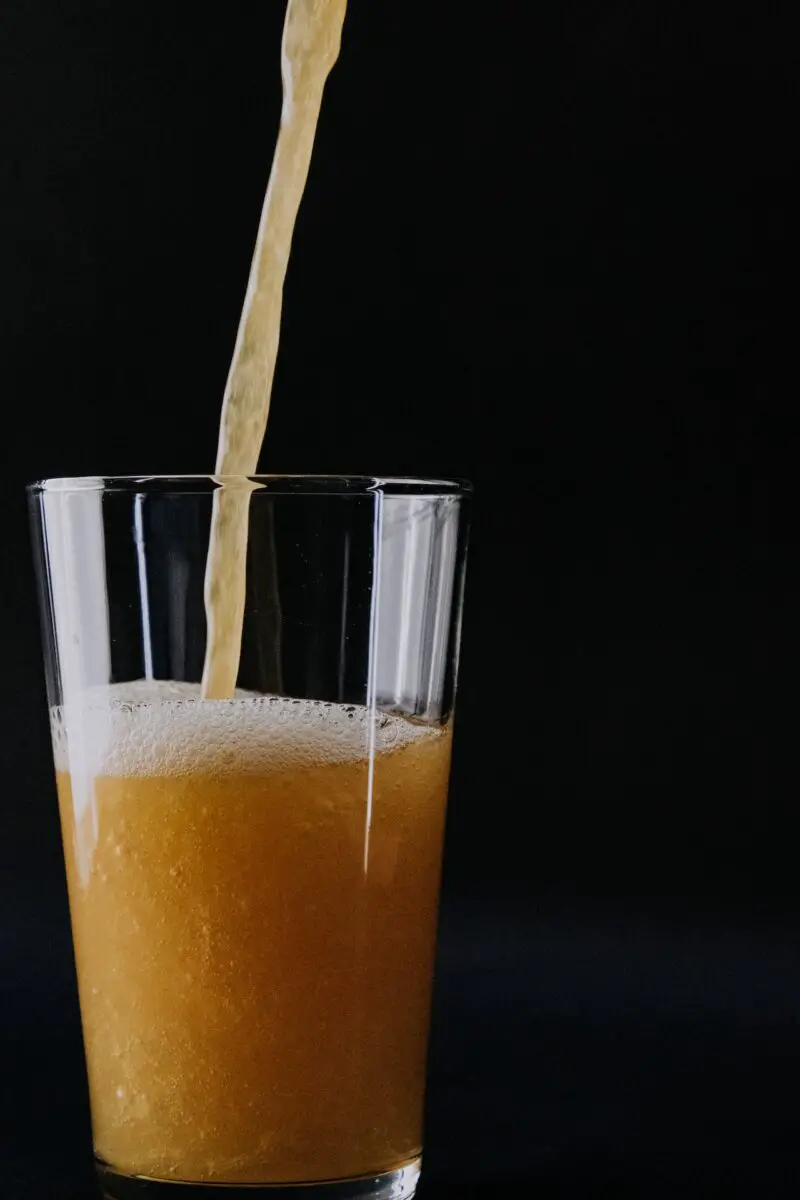If you buy something through a link in our posts, we may get a small share of the sale.
Why is beer cloudy, and what makes it so? This is a question most beer enthusiasts and homebrewers keep asking themselves whenever this problem arises. A cloudy beer can be a disappointment, and that is why any beer lover will do anything possible to ensure the cloudy appearance is eliminated.
Contents
Why Is My Beer Cloudy?
The main reason beer becomes cloudy is the hazes developed from yeast, proteins, and polyphenols suspended in the beer. These substances come as a result of poor filtration or due to improper refrigeration timing. As a result, the substances create a haze that makes the beer cloudy.

Another reason why beer becomes cloudy is because of the starch haze. Starch haze results from an incomplete conversion of the mash during brewing. An incomplete mash conversion may lead to a high level of unfermentable sugar, making beer cloudy. Therefore, if you are a homebrewer, ensure a complete starch conversion by maintaining proper mashing temperature (145 to 158 degrees Fahrenheit).
What Are the Different Types of Haze?
Different types of haze occur in beer, each caused by different substances. The following are some of the types of haze:
Protein Haze
Protein haze is a common problem in wheat beer caused by suspended insoluble protein particles that bind together. These particles are what give the beer a cloudy haze and can also affect its flavor. In most cases, the particles are largely the result of dry hopping. Dry hopping is when a brewer adds hops during fermentation to balance the sweetness in the wort.
The Polyphenols from hops combine with other proteins from the beer to form the protein particles, leading to cloudiness. However, this majorly occurs when a large quantity of hops is used. These protein particles can also alter the beer’s flavor and reduce its shelf life. The best way to curb this is to use fining agents, such as gelatin or isinglass.
Chill Haze
A chill haze occurs when the beer is chilled below 34 degrees Fahrenheit. This temperature makes the beer components (proteins and polyphenols) aggregate to form large colloidal particles. The result is a large complex that cannot dissolve in beer, making it cloudy.
The best way to curb chill haze is to ensure proper whirlpool and trub separation in the kettle or apply fining agents such as Irish mosh and carrageen. It is advisable to avoid sparging as this can extract more tannins, leading to haze.
Bacterial Haze
Bacterial haze is one of the major causes of cloudiness in beer. The two common bacteria responsible for beer cloudiness are lactobacillus and pediococcus. These bacteria cause lactic acid and other compounds in beer, clouding it.
The bacteria can be found in places such as tap lines, kegs, or brewing equipment. Even though these bacteria may not alter the taste of the beer, it indicates that your brewing process has bacterial components and needs immediate attention.
Yeast Haze
Yeast haze occurs when beer appears cloudy due to the presence of yeast cells that are yet to settle out. It is a natural part of the brewing process that can be experienced in commercial and homebrewed beer.
The haze can be caused by various factors, such as the type of yeast used, fermentation temperature, and the amount of time a beer is left to settle before it is kegged. You can use the centrifugation of filtration technique to remove the yeast suspension before bottling your beer.
How to Prevent Beer Cloudiness
There are various steps you can take to prevent beer cloudiness. This will ensure you have a clear beer that everyone can enjoy. Here are some of the techniques you can apply:
- Always use fresh ingredients: For example, ensure you use fresh hops as old or stale can cause the beer to be hazy
- Ensure an optimal temperature throughout the brewing process: This will keep the yeast healthy and prevent cloudiness
- Use fining agents: You can use fining agents such as Irish moss, gelatin, and isinglass before kegging or bottling beer to make it clear
- Practice proper sanitization: Ensure your brewing equipment is properly cleaned and sanitized to keep bacteria away

Frequently Asked Questions
Is It Ok to Drink Cloudy Beer?
Yes, it is okay to drink cloudy beer. The sediments that make beer cloudy are not harmful to your body. The only thing is that the beer may have an unpleasant taste or appear too old.
How Do You Know if Beer Is Contaminated?
The fastest way to know whether the beer is contaminated is by smelling it. Contaminated beer will always have a skunk smell. Other ways include testing and checking the presence of mold.
How Does Beer Get Contaminated?
Beer can get contaminated if you don’t practice proper sanitization of your brewing equipment. Contamination can also occur during brewing if the yeast or other ingredients are improperly handled or stored.
Conclusion
There are many reasons why beer can become cloudy. This includes the presence of hops, proteins, yeast, and improper sanitization of brewing equipment. Understanding these causes is ideal for helping brewers and beer lovers take the necessary steps to prevent them from happening. Cheers, and always drink responsibly!

